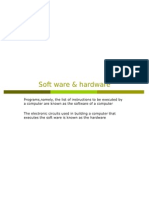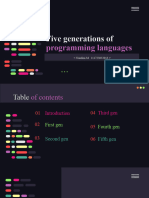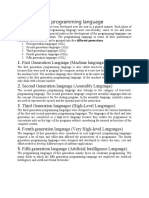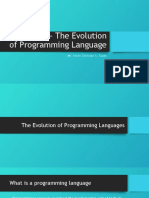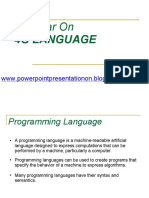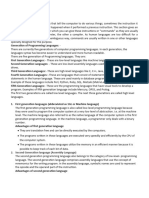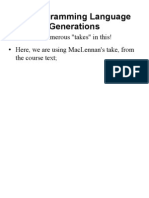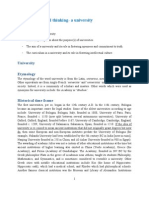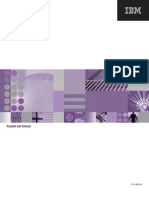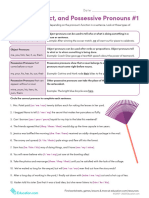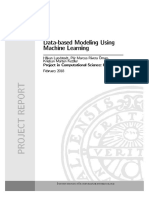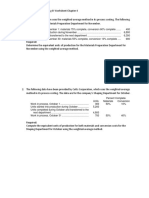0% found this document useful (0 votes)
66 views12 pagesLesson 28: Programming Languages and The Programming Process
This document discusses the evolution of programming languages and the programming process. It describes the three main categories of programming languages - machine languages, assembly languages, and higher-level languages. It then details the five generations of higher-level languages from third to fifth generation, and provides examples of languages in each category. The document concludes with an overview of the five phases of the systems development life cycle for programming.
Uploaded by
Jamal Ajamhs AbdullahiCopyright
© Attribution Non-Commercial (BY-NC)
We take content rights seriously. If you suspect this is your content, claim it here.
Available Formats
Download as PPS, PDF, TXT or read online on Scribd
0% found this document useful (0 votes)
66 views12 pagesLesson 28: Programming Languages and The Programming Process
This document discusses the evolution of programming languages and the programming process. It describes the three main categories of programming languages - machine languages, assembly languages, and higher-level languages. It then details the five generations of higher-level languages from third to fifth generation, and provides examples of languages in each category. The document concludes with an overview of the five phases of the systems development life cycle for programming.
Uploaded by
Jamal Ajamhs AbdullahiCopyright
© Attribution Non-Commercial (BY-NC)
We take content rights seriously. If you suspect this is your content, claim it here.
Available Formats
Download as PPS, PDF, TXT or read online on Scribd
/ 12







